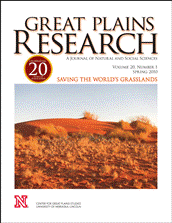Center for Great Plains Studies

Great Plains Research: A Journal of Natural and Social Sciences (through 2013)
Date of this Version
February 1995
Document Type
Article
Abstract
For the majority of Native American tribes on the Great Plains, contact with Euro-Americans resulted in a number of changes in their lifeways. For the Omaha tribe, the introduction of both the horse and firearms meant a diversification in nutritional strategies and a florescence in their culture. After being confined to their reservation in 1855, the Omaha continued to remain largely self-sufficient in food production. During the early years of the reservation until the turn of the century, the Omaha were highly successful farmers, producing surpluses of cash• and garden variety crops. In this paper I argue that today the situation is quite different. Few Omaha are able to produce their own food as most of their land has either been sold or leased. The tribe s dependency on processed, store-bought foods and government commodities has increased dramatically in the last fifty years. From an analysis of changing foodways over the past 200 years I conclude that, associated with this dependency, is a marked increase in chronic dietary diseases such as diabetes and obesity.


Comments
Published in Great Plains Research 5:1 (February 1995). Copyright © 1995 The Center for Great Plains Studies, University of Nebraska–Lincoln. Used by permission. http://www.unl.edu/plains/publications/GPR/gpr.shtml